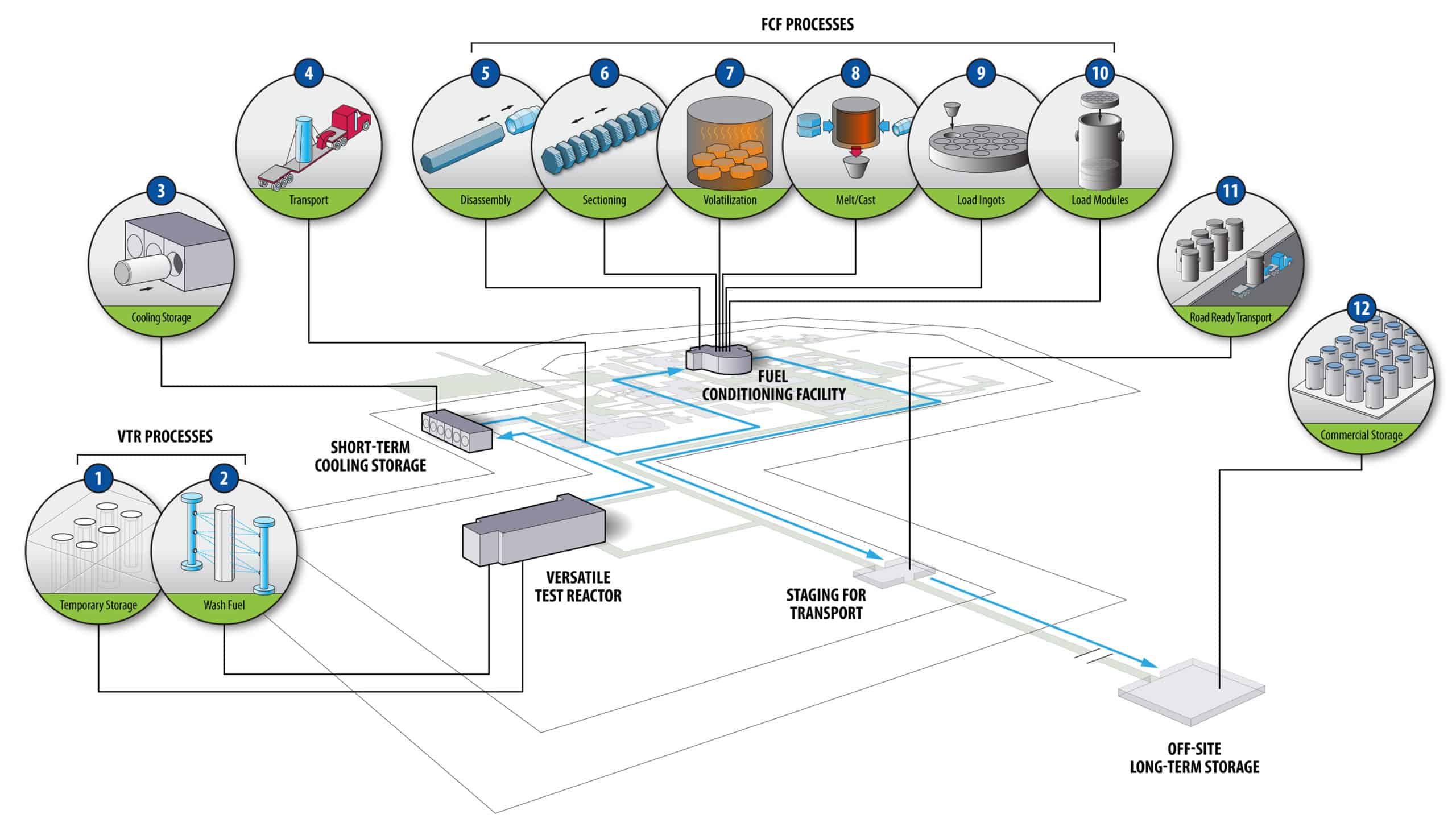How VTR Handles Waste
Used fuel from the Versatile Test Reactor (VTR) must be processed and secured in storage containers to minimize the risk of radioactive materials escaping into the environment.
The majority of waste generated by VTR is used fuel and the steel hardware that encases the fuel in the reactor core.
Small amounts of liquid waste and sodium (used for bonding the fuel) that are generated during normal operations will be treated.
How VTR Handles Waste
Used fuel from the Versatile Test Reactor (VTR) must be processed and secured in storage containers to minimize the risk of radioactive materials escaping into the environment.
The majority of waste generated by VTR is used fuel and the steel hardware that encases the fuel in the reactor core.
Small amounts of liquid waste and sodium (used for bonding the fuel) that are generated during normal operations will be treated.
The used fuel and waste from VTR is expected to fill one commercial used-fuel canister every two years—or approximately 30 canisters over the reactor’s 60-year life span.
The used fuel and waste from VTR is expected to fill one commercial used-fuel canister every two years—or approximately 30 canisters over the reactor’s 60-year life span.
VTR will discharge 45 fuel assemblies each year. Each fuel assembly consists of:
Zirconium
Plutonium
Uranium & Fission Products
Hardware (primarily steel)
*Approximate
How VTR will manage its used fuel
1. Fuel assembly is removed from its location in the reactor core and stored in the sodium pool for one year to cool down.
2. Fuel assembly is removed from the reactor vessel and washed.
3. Fuel assembly is cooled for an additional three to four years.
4. Fuel assembly is placed in a transport cask and moved to the fuel-conditioning facility.
5. Fuel assemblies are cut into sections.
6. Sections are heated to remove free sodium.
7. Sections are then melted and cast into ingots.
8. Ingots are loaded into storage modules, which are filled with helium and welded shut.
9. Storage modules are loaded into commercial-sized storage.
10. Canisters are stored in an interim, on-site storage system.
11. Canisters are taken to off-site, long-term storage once a facility is established.





